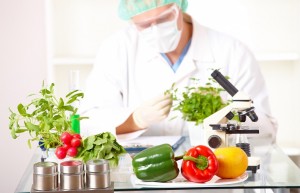The science of food

Following what, for many of us, is a season of overindulgence – and big business for food manufacturers and retailers – we thought we would start the New Year reflecting on some of what we have learned about the food industry over the last twenty years in business. Having worked closely with many suppliers to the food industry in that time, we are regularly amazed by the skill, expertise and technical achievements required to develop food products on an industrial scale that reach global markets and stand up to the intense pressures of cost, shelf-life and quality control. Unless you know about some of the ins and outs, you wouldn’t believe the innovation going on, or the scrutiny involved.
Chicken or egg?
We help clients communicate to food manufacturers who, in turn, have a big task communicating the benefits of their products and brands to consumers. The amount of effort that goes into this causes consumers to ask whether the food industry drives social change, or whether social change drives the evolution of the food industry – or, most likely, whether it’s a bit of both. The obesity crisis is a good example of this conundrum: has the availability and cheap cost of convenient and unhealthy foods and beverages caused (or contributed to) the obesity crisis? Or, is consumer demand for convenient, cheap and satisfying food and beverage options the root cause?
Many consumer pressure groups and media outlets often demonise the food industry and big news stories, for example, the UK sugar tax, with its celebrity followers, simplifies a complex social challenge (childhood obesity) and rallies public opinion against the food industry at large.
It’s not all bad!
Food industry suppliers and manufacturers are spending millions, if not billions, every year on developing foods and beverages that deliver vital nutrients and health benefits to a world where ‘hidden hunger’ and real hunger have been allowed to prevail.
The US peanut industry’s Peanut Butter for the Hungry initiative distributes peanut-based ready-to-use therapeutic foods, also known as RUTFs, to the poorest regions of the world. These energy dense, specially formulated foods are designed to combat severe acute malnutrition, with most cases being cured within just six weeks. This is a philanthropic venture, but peanut growers, shellers and manufacturers donate their time, skills and product because they know the product they trade has the potential to relieve suffering. These kinds of initiatives are commonplace in the food industry, but rarely reported.
Here’s the science bit
The discipline of food science is fascinating. Proponents research the role of different ingredients and manufacturing processes in a recipe on: flavour, texture, shelf-life integrity, visual appearance, nutritional value. Sensory experts and ‘super tasters’ produce incredibly detailed analysis of samples to inform product development. People test the springiness of bread, the creaminess of yoghurts and the cloudiness of beverages. Ingredients are added and taken out, and processes are adapted to meet every quality and cost measure in order to target consumer desire – including positive health benefits.
Food ingredient suppliers who know everything there is to know about their advanced ingredients, and processing and analytical equipment suppliers, who can help optimise processes, check quality and analyse nutritional content, provide food developers with the tools to innovate and create foods and beverages that meet today’s global mega trends: health and wellness; natural and sustainable; better-for-you and indulgence.
It’s a fascinating world and we have tonnes of expertise in helping suppliers to the food industry to communicate with food technologists and scientists, R&D, marketers, senior management and buyers in the world’s leading food manufacturers.
Give us a call on +44 (0) 1477 539 539 or email business@scottpr.com today to find out more.






